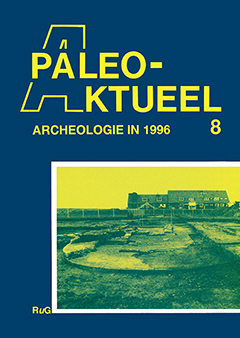VUURMAKERS UIT PALEO-ESKIMONEDERZETTINGEN IN WEST-GROENLAND
Samenvatting
From several Palaeo-Eskimo sites in western Greenland, implements with one or two rounded ends are known. These tools date from both the Saqqaq Culture (c. 2500-1000 BC) and the Dorset Culture (c. 800 BC-1000 AD). Most of these tools are secondarily used 'burin-like tools' (polished), whose primary function is unknown. They are manufactured from silicified slate ('killiaq'). A number of such tools, from the Dorset site Ikkarlusuup Tima in the Disko Bay area, are illustrated in this article. The rounded ends show gloss and dense sets of subparallel scratches. The same combination of use-wear traces is found on experimental pieces of killiaq used in combination with pyrite to make fire. Though conservation is excellent at the WestGreenlandic sites, no wooden implements for making fire have been identified. Our hypothesis is that the rounded tools were fire-makers. Pieces of pyrite have been found both at Saqqaq and Dorset sites. The historically known Thule Eskimos in the same area generally employed the 'fire-drill' to produce fire (wood on wood).

